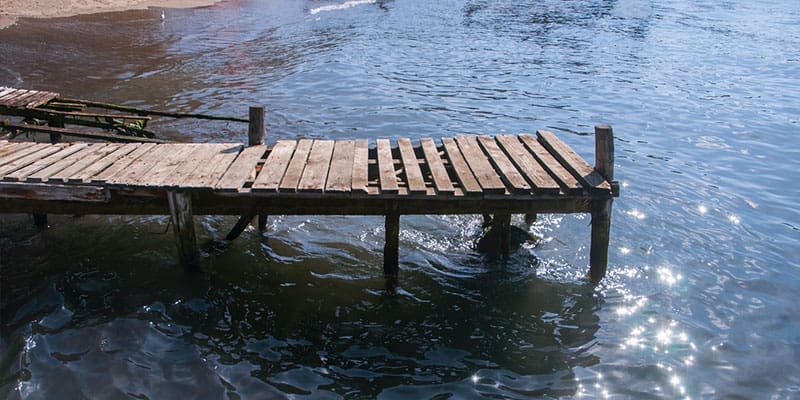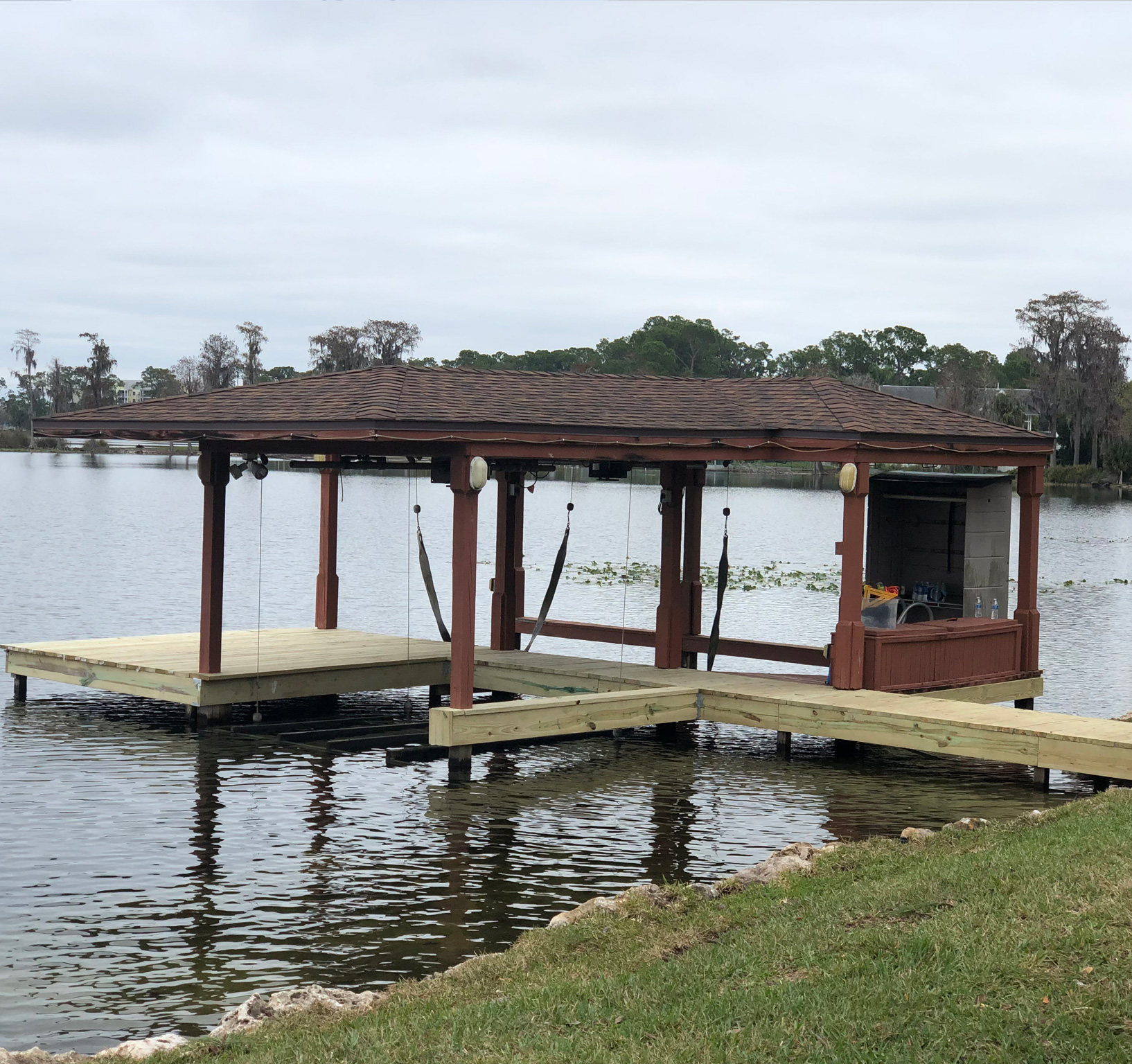Common Issues That Result In Expensive Dock Repairs
Common Issues That Result In Expensive Dock Repairs
Blog Article
Efficient Dock Fixing Techniques: Guaranteeing Structural Stability
Making certain the structural stability of docks with efficient repair methods is critical for the long life and safety and security of aquatic centers. Ultimately, choosing the best repair work products, such as composite materials and corrosion-resistant alloys, is crucial for longevity.
Analyzing Dock Damage
Examining dock damages is an important initial step in making sure the architectural stability and safety and security of any type of docking facility. This preliminary evaluation entails a detailed examination to identify both covert and noticeable problems. Key facets to check out consist of the dock's foundation, pilings, outdoor decking, and equipment. Each component needs to be inspected for indicators of wear, rot, corrosion, or various other types of deterioration that could compromise the structural honesty.
Architectural engineers or qualified examiners usually do these analyses using specialized methods and tools. Undersea evaluations might use finder devices or remotely ran lorries (ROVs) to detect immersed damages. Above water, visual evaluations are enhanced by utilizing wetness meters and various other diagnostic devices to reveal underlying concerns not quickly noticeable to the nude eye.

Picking Fixing Materials
Choosing the appropriate repair materials is a crucial action in the dock restoration process, one that directly affects the durability and performance of the fixed framework. Material selection must be driven by aspects such as environmental conditions, load-bearing requirements, and compatibility with existing dock elements.
In enhancement to timber, composite products are significantly popular due to their durability and reduced upkeep requirements. Composites, generally made from a blend of plastic and timber fibers, offer superb resistance to rot, bugs, and UV damages. For metal docks, choosing corrosion-resistant alloys such as galvanized steel or marine-grade aluminum is vital to prevent corrosion and ensure structural stability in saline water problems.
Epoxy resins and marine-grade sealants are crucial for repairing fractures and securing joints, supplying a water resistant obstacle and boosting the dock's overall stamina. By meticulously picking top notch products, dock repair work can achieve durable outcomes, therefore guarding against future deterioration and guaranteeing safe, reputable usage.
Architectural Reinforcement Strategies
Efficient structural reinforcement techniques are essential in ensuring the security and longevity of dock repairs. One fundamental approach involves using steel or composite support bars (rebar) within concrete structures. Rebar offers additional tensile stamina, protecting against splits and distributing loads much more uniformly. This technique is particularly effective for anchors revealed to heavy tons or severe environmental conditions.
One more crucial technique is the application of fiber-reinforced polymers (FRP) These materials provide high strength-to-weight proportions and excellent resistance to deterioration, making them excellent for enhancing wood or concrete anchors. FRP can be applied in sheets or strips and adhered with epoxy resins to boost architectural stability.
Bracing and anchoring systems additionally play a crucial duty in architectural support. Cross-bracing, utilizing metal or wooden beams, can combat lateral pressures, minimizing guiding and activity. Anchoring systems, such as helical piers or driven stacks, provide a secure foundation by moving loads to much deeper, more stable dirt layers.
Finally, the assimilation of load-distribution plates can help distribute weight much more evenly throughout the dock's surface area, minimizing localized anxiety factors. These strategies collectively make certain that docks remain risk-free and durable, with the ability of holding up against the roughness of their operational environment.
Advanced Fixing Methods

One more advanced method includes undersea welding, which enables repair work to be carried out without the need to dewater the location. This approach is especially helpful for addressing structural concerns in immersed dock components, making certain minimal disturbance to procedures. Boosted welding strategies, paired with robot systems, provide precision and reliability, consequently expanding the check my site life-span of the dock.
Furthermore, cathodic defense systems are carried out to avoid rust in metal dock structures. By utilizing sacrificial anodes or pleased current systems, these strategies properly reduce the electrochemical processes that bring about material wear and tear.
Lastly, advanced tracking modern technologies, such as structural health tracking (SHM) systems, offer real-time data on the condition of dock frameworks. These systems enable aggressive upkeep and timely interventions, ultimately guaranteeing the long-lasting structural stability of the dock.
Upkeep and Prevention
Upkeep and avoidance are basic concepts that underpin the longevity and security of dock structures. Routine evaluations are extremely important, enabling very early discovery of wear and tear, potential weak points, and environmental impacts. An aggressive strategy, entailing regular checks for deterioration, rot, and architectural shifts, minimizes costly fixings and extends the dock's operational life.
Safety nets must include using protective finishes to metal elements to defend against corrosion and using treated wood to resist decay. Additionally, guaranteeing correct water drainage and ventilation can stop water buildup, which is a common source of structural degradation. Incorporating quality materials and sticking to maker guidelines throughout building and repair stages also play crucial functions in improving sturdiness.

Training workers in dock upkeep best techniques makes certain constant application of safety nets. Leveraging technical breakthroughs, such as drones for assessments and sensors for real-time monitoring, can further boost upkeep initiatives. By prioritizing maintenance and avoidance, dock owners can make certain structural integrity, operational security, and cost-effective monitoring over the dock's life expectancy.
Final Thought
In final thought, keeping the structural visit the site integrity of marine centers requires detailed dock fixing strategies. Thorough examinations using sophisticated tools discover both visible and concealed damages, while the selection of proper repair work materials improves toughness. Executing architectural reinforcement techniques addresses anxiety points efficiently. Advanced fixing strategies, paired with routine maintenance practices, make sure the dock remains operational and safe under varied ecological conditions. Adopting these approaches significantly extends the life-span and functionality of marine framework.
Making certain the structural stability of docks through effective repair service techniques is extremely important for the durability and safety of marine centers.Picking the appropriate fixing materials is a critical action in the dock restoration procedure, one that directly influences the longevity and performance of the fixed framework.Effective structural support strategies are critical in ensuring the stability and long life of dock repair work. By prioritizing upkeep and avoidance, dock proprietors can make sure structural integrity, functional safety, and economical management over the dock's life-span.
In conclusion, keeping the architectural integrity of marine centers requires thorough dock fixing methods.
Report this page